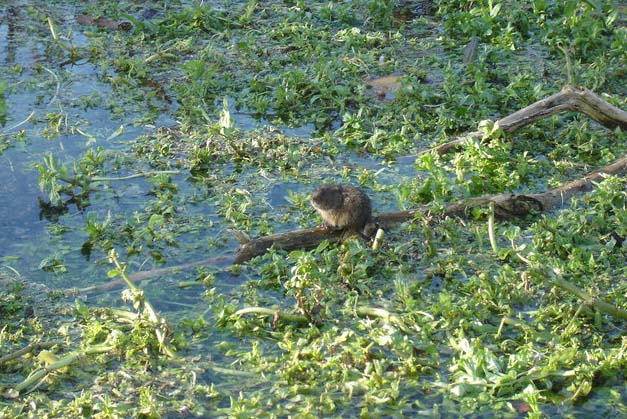
England’s population of water voles could have declined by a fifth since 2011, the Environment Agency and the Wildlife Trusts have revealed.
New maps published today suggest that while there are some strongholds where water voles continue to thrive, the overall population in England is struggling and could have reduced by up to 22 per cent. Populations in the south west, the south east, the Lake District and parts of the midlands are especially vulnerable.
Populations continue to disappear due to long-term habitat loss, mink predation and extreme weather events, including last year’s spring drought.
Creating and maintaining large-scale good quality habitat is key to ensuring the species’ survival. Reintroduction schemes, combined with mink control programmes and habitat management are providing a lifeline for this much-loved species.
Alastair Driver, the Environment Agency’s National Conservation Manager and Chair of the UK Water Vole Steering Group, said: 'Creating new habitat helps protect our native species, like water voles and otters, and helps tackle climate change. The Environment Agency has created nearly 5,000 hectares of wetland and river habitats in the last 10 years and we hope to double this in the next 10. Added to this, our rivers at their healthiest for over 20 years, but control of the American mink is essential if water voles are to benefit from these healthier rivers and new habitats.'
Paul Wilkinson, The Wildlife Trusts’ Head of Living Landscape, said: 'This latest information from the National UK Water Vole Database and Mapping Project is a real cause for concern. Not enough is being done to secure this charismatic species’ future. In part, the new data reflects a reduced survey effort over the last few years, linked to a reduction in available funding for water vole conservation work. There is clear evidence from some areas, in the south of England for example, that water voles are disappearing fast.
'Strongholds do remain, and these are often located in areas which support more extensive wetland habitats, such as the fens, or headstreams in upland areas. We must ensure these strongholds persist and renew efforts to save this much-loved species, through targeted conservation action and sustained monitoring programmes.'
The Environment Agency, Wildlife Trusts and others are working hard to save the water vole, with projects that establish where populations remain and what needs to be done to help them re-connect and expand across larger areas. Surveyors look for the occurrence of characteristic field signs such as droppings, feeding stations and burrows in order to detect their presence along water courses.
